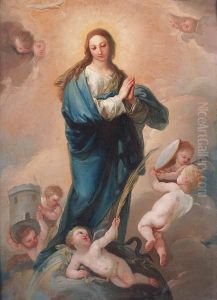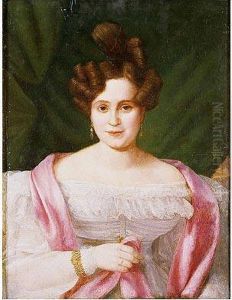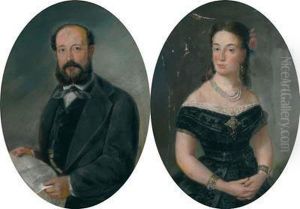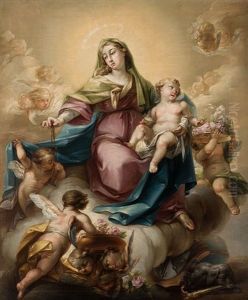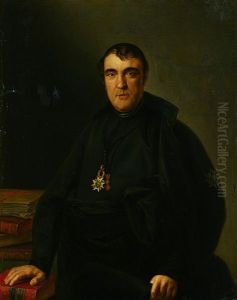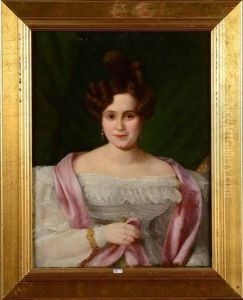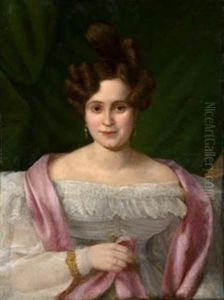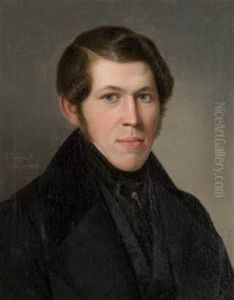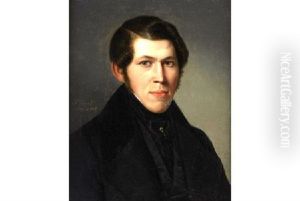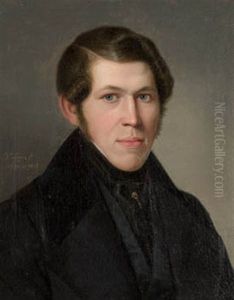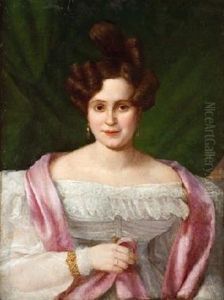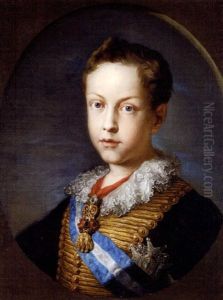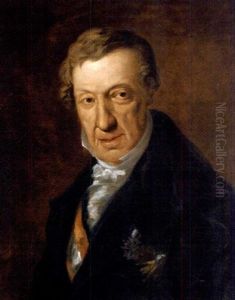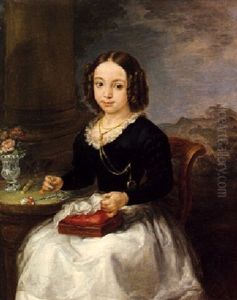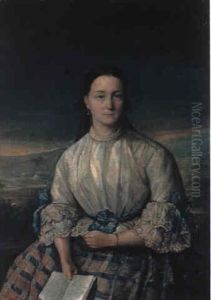Bernardo Lopez Piquer Paintings
Bernardo López Piquer was a prominent Spanish painter born in Valencia in 1801. He hailed from a family deeply rooted in the arts; his father, Vicente López Portaña, was a distinguished painter who served as a court painter to Ferdinand VII. This familial background provided Bernardo with a rich artistic environment from an early age, fostering his development and passion for painting. Despite the shadow of his father's significant reputation, Bernardo managed to carve out his own identity and reputation in the Spanish art world.
Bernardo López Piquer's education in art began under the guidance of his father, from whom he learned the fundamentals of painting, drawing, and the appreciation of classical art. He furthered his studies at the Real Academia de Bellas Artes de San Carlos in Valencia, where he honed his skills and absorbed the influences of the Spanish masters. His style, initially influenced by his father's neoclassicism, gradually evolved to incorporate elements of Romanticism, reflecting the changing tastes of the era.
In 1829, Bernardo moved to Madrid, where he sought to establish himself independently. His talent was recognized, and he received commissions for portraits and religious subjects, which were popular genres of the time. He became known for his detailed and sensitive portraits, which captured not just the physical likeness but also the character and inner life of his subjects. Bernardo's work was appreciated for its technical skill, color palette, and emotional depth, earning him a place among the notable Spanish painters of the 19th century.
Throughout his career, Bernardo López Piquer also dedicated himself to teaching, passing on his knowledge and skills to the next generation of artists. His contributions to Spanish art were recognized by his contemporaries, and he was awarded various honors and distinctions. Despite living in the shadow of his father's legacy, Bernardo's work stands out for its individuality and the unique way it reflects the transition from Neoclassicism to Romanticism in Spanish painting.
Bernardo López Piquer's legacy is preserved in the collections of various museums and institutions, where his works continue to be studied and admired. He died in Madrid in 1874, leaving behind a body of work that contributes to our understanding of Spanish art history and the evolution of painting styles in the 19th century.
